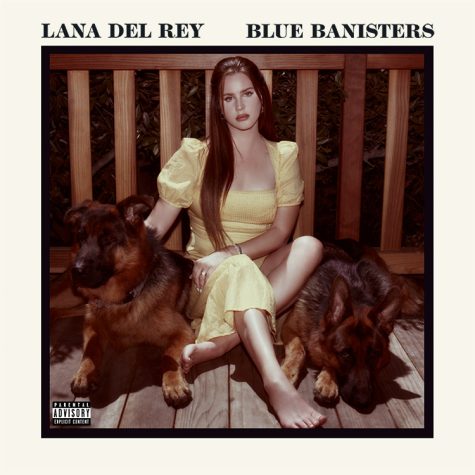Lana Del Rey: A Change In Eras
A Lana timeline on how her music has changed from the dramatic teenage phase into a more mature and calm listen.

Elizabeth Grant has created quite a persona for herself: all Hollywood drama and glam, but who would’ve guessed that the character she plays is a far cry from her subdued, less-than-perfect past?
A troubled nepotism baby in Upstate New York, Lizzy leapt at the chance to reinvent herself under the glitzy pseudonym of Lana Del Rey, releasing her Born to Die album in the height of 2012 tumblr mania: a world of music, winged eyeliner, and teenage rebellion. The album fit right in with the social media site’s glorification of abusive relationships, New York City, growing up as an adolescent girl in America, heart-shaped sunglasses, and dark, romantic imagery.
She made her music personal, exhibiting dramatized stories from her time before boarding school (i.e. This Is What Makes Us Girls). Angsty teens ate it up, idolizing the singer and giving her the coveted status of an Internet “it-girl.” With the release of her three following albums—Ultraviolence’s dark romanticization of the West Coast and older men, Honeymoon’s Italian holiday feel, and Lust for Life’s hippie 70’s flare—Grant’s token gritty drama was nailed once again.
In 2019, Grant shocked her fans with the release of a stunning piano ballad album, Norman F****** Rockwell (NFR), drastically straying from her persona of a femme fatale American icon and towards a more subdued and saturnine young woman. Her angsty girlhood left behind, Lizzy grew into her emotions and portrayed them in a definitively more sophisticated way—although still lovesick, with lyrics such as “why wait for the best when I could have you,” the record is contemplative and serene. Grant’s slow indie croons marking a stark contrast with the alternative art pop style of her earlier music. She sings about not feeling at home in Hollywood inside her bubble of fame and instead seeking comfort in a simpler life in the Golden State.

NFR was just the tip of the iceberg when it comes to Grant’s persona shift. Her 2021 releases, Chemtrails over the Country Club and Blue Banisters, fully isolated the singer from her fans as she almost completely strayed from the public eye and privatized all of her social media accounts.
Through these three recent music releases, Grant favors her relationships with her family and herself, owning her femininity like never before and completely disregarding her past relationships with older men and drug abuse. She is far more Lizzy, far less Lana; not an entertainer anymore, just an artist.
With confirmation of a new album in the works, we can only wonder what else Lana has to offer us. Will she surprise her eager fans with an ode to her dramatized and troubled past, or will she continue to solidify her identity as a mature and streamlined melancholic artist?


